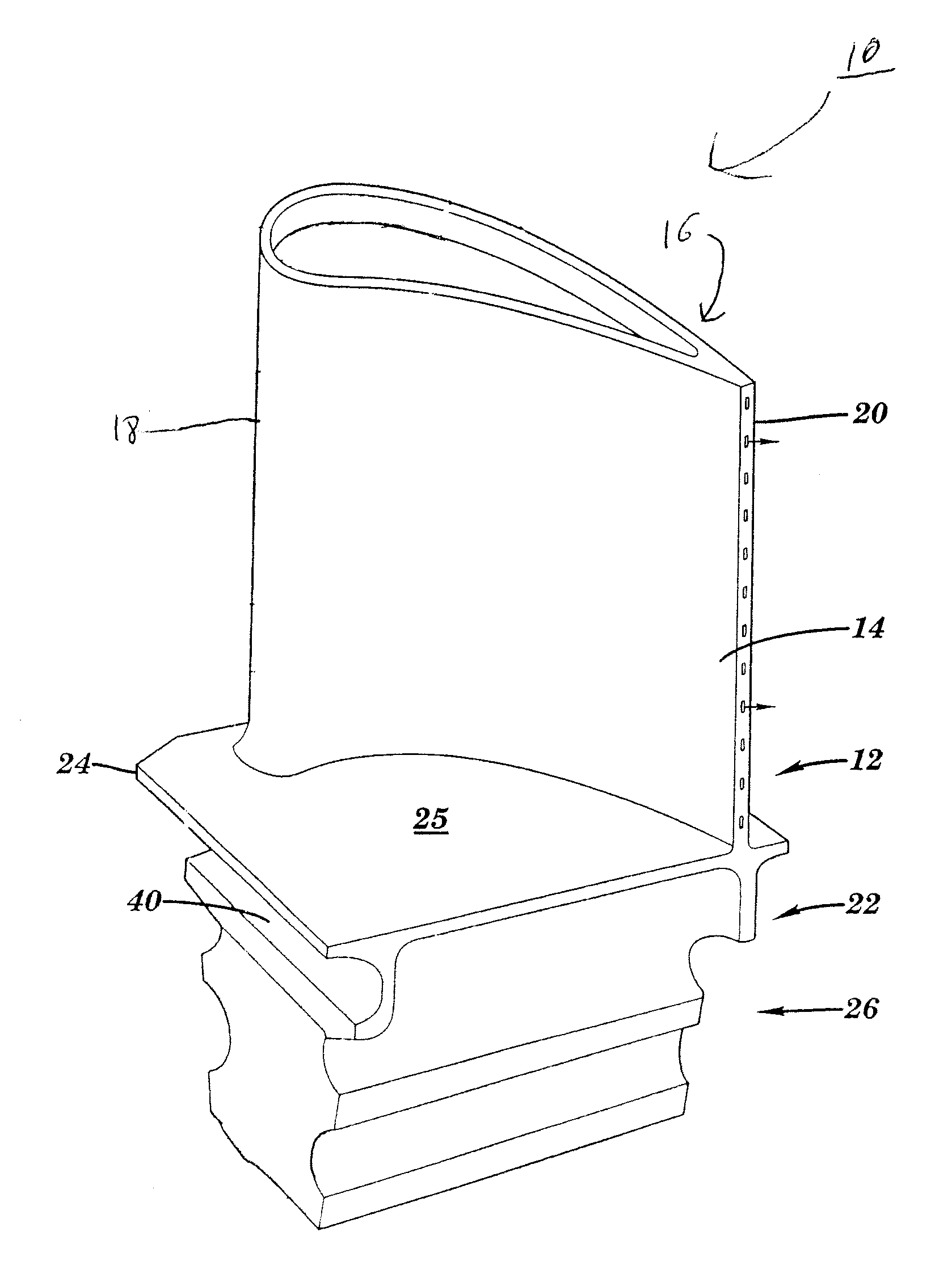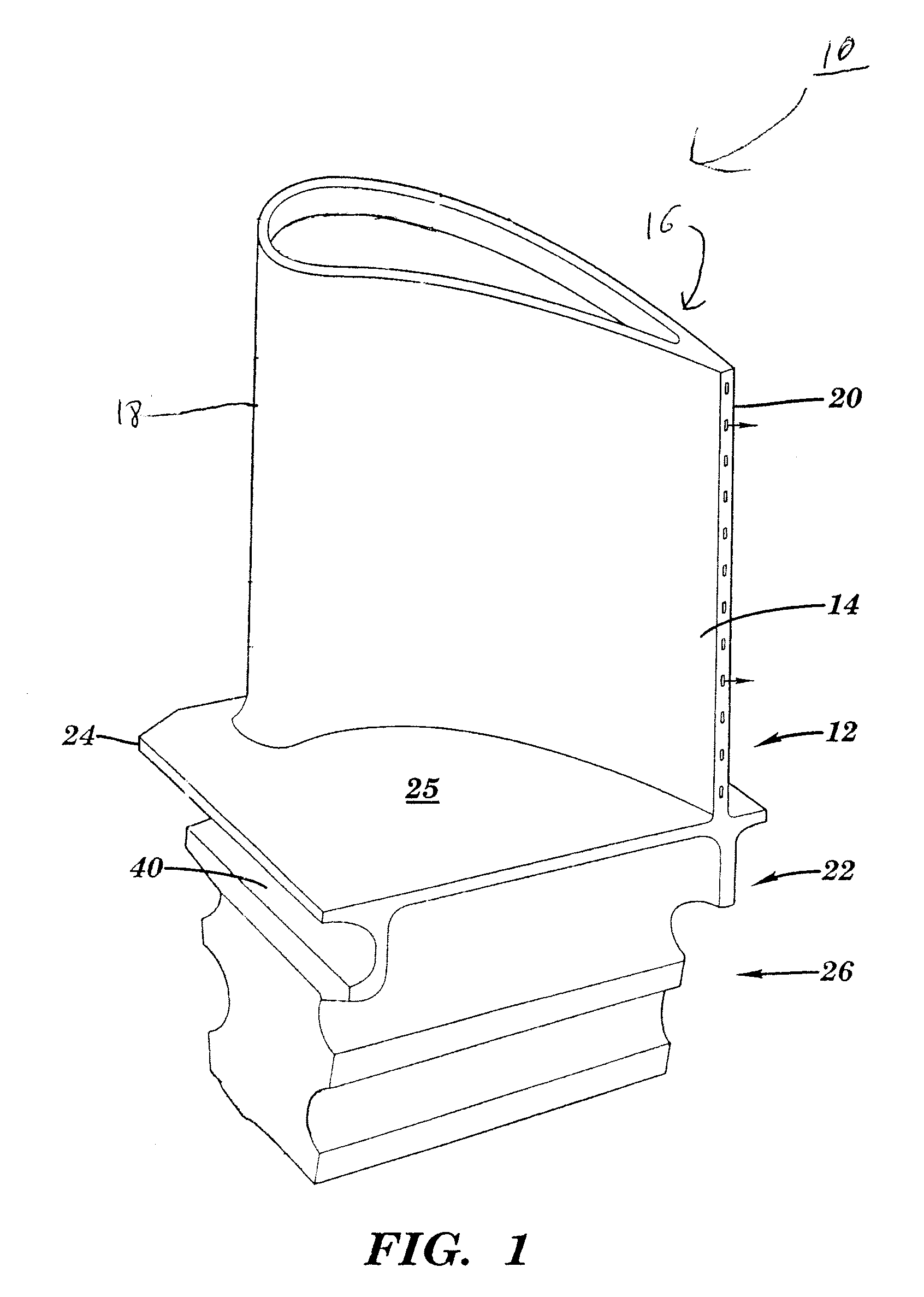Method for applying ceramic coatings to smooth surfaces by air plasma spray techniques, and related articles
a technology of ceramic coatings and plasma spraying, applied in the direction of superimposed coating processes, coatings, chemistry apparatuses and processes, etc., can solve the problems of variable turbine elements failing, ebpvd systems are very costly, and damage to the engin
- Summary
- Abstract
- Description
- Claims
- Application Information
AI Technical Summary
Problems solved by technology
Method used
Image
Examples
example 1
[0043]A number of test coupons (“buttons”) were prepared. The substrate was a nickel-based material (Rene® N-5). Two button samples were prepared for tensile adhesion tests; and three test buttons were prepared for furnace cycle (FCT) tests. Each button had an outer diameter of about 1 inch (2.54 cm); and was about ⅛ inch (0.3 cm) thick.
[0044]A bond coat (standard, single-phase nickel-platinum-aluminide) was applied to the surface of each button. The application technique involved plating with platinum, followed by aluminiding by an above-the-pack process. The thickness of each coating was about 50 microns. The surface roughness of each coating, as applied, was less than about 50 micro-inches (Ra).
[0045]After the deposition of the bond coat, the surface of each button was grit-blasted with 80-mesh alumina grit (Al2O3), in a pressure grit-blaster. The air pressure was 70-80 psi. The average surface roughness (Ra) after grit blasting was about 65 micro-inches, as measured with Mitutoy...
PUM
| Property | Measurement | Unit |
|---|---|---|
| Thickness | aaaaa | aaaaa |
| Thickness | aaaaa | aaaaa |
| Particle size | aaaaa | aaaaa |
Abstract
Description
Claims
Application Information
 Login to View More
Login to View More - R&D
- Intellectual Property
- Life Sciences
- Materials
- Tech Scout
- Unparalleled Data Quality
- Higher Quality Content
- 60% Fewer Hallucinations
Browse by: Latest US Patents, China's latest patents, Technical Efficacy Thesaurus, Application Domain, Technology Topic, Popular Technical Reports.
© 2025 PatSnap. All rights reserved.Legal|Privacy policy|Modern Slavery Act Transparency Statement|Sitemap|About US| Contact US: help@patsnap.com


